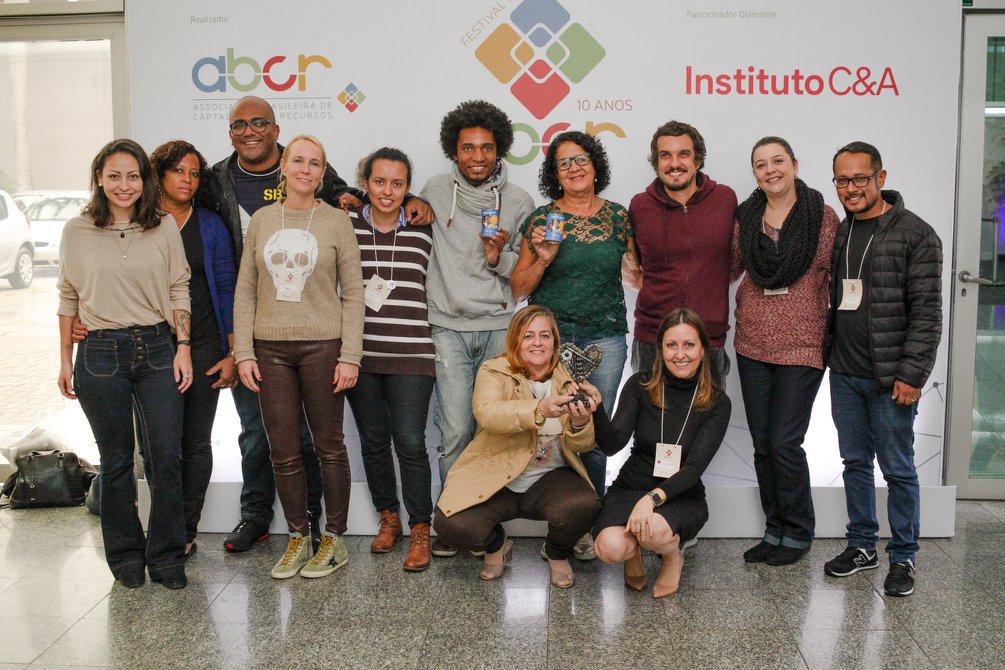We’ll keep the lot – thank you
There has been recent news stories about charity collectors lately, some of these have reached the global ‘ear’ others have only been covered in the country of origin.
 The latest to hit global news has been about ‘chuggers’, a quaint term for ‘charity muggers’. They’re the people out on the streets raising awareness, funds and subscriptions; who bail up people, use all manner of technique to ‘sell’ their story to the public.
The latest to hit global news has been about ‘chuggers’, a quaint term for ‘charity muggers’. They’re the people out on the streets raising awareness, funds and subscriptions; who bail up people, use all manner of technique to ‘sell’ their story to the public.
This along with stories about contract charity collection companies who don’t pass on the full amount of the money raised.
The contract companies have been known to retain all of the funds pledged through memberships, subscriptions, in the first year; only paying the charity it’s funds in the second year.
Both of these have the potential to give the sector a bad name.
It’s hard enough for organizations to gain support, to gain a loyal following and be able to deliver the services it’s set up to do. What organizations don’t need, at anytime, is further distraction from their core activities.
Who’s at fault – Is it the organizations, is it the external ‘partner’ or is it both?
Something all nonprofits should do is check who they are getting into bed with, who they are building alliances with.
A partnership, no matter the type – sponsor, collection agency, or other significant partner needs to be well thought out, due diligence is needed, and if these checks are not done then some of the blame when things go wrong (and they can go wrong) has to lay at the feet of the organization.
If an organization is unsure about any partnership, if there is any niggling doubt – then it is time to stop, take a breathe and look at the partnership. Revaluation before things get too far down the track is a lot easier, a lot messier and quite possibly a lot cheaper than – after the event.
 What should you be looking out for, testimonials and recommendations from others is a good place to start, but you should also be looking a little deeper, have the people behind the organization (agency) been involved in the field for a while or are they new to it, have they anything in their passed that rings alarms bells.
What should you be looking out for, testimonials and recommendations from others is a good place to start, but you should also be looking a little deeper, have the people behind the organization (agency) been involved in the field for a while or are they new to it, have they anything in their passed that rings alarms bells.
At the very least organizations should be using Google, their own personal contacts and doing some other more traditional checks to ensure that who they are partnering with has nothing to hide, that they have not been ‘investigated’ for running any scams or duping the giving public.
No organization should ever go into a partnership unless they have done their homework, would you?
Don’t let anyone you’re doing work with to raise funds for your organization keep the lot – no matter whether it’s for a month, a quarter or a year – it’s you’re money they’re raising.



8 Comments
Sean Triner · April 20, 2012 at 02:16
Graeme, I note that you consult to charities as do I, and we are effectively ‘competing’ against face to face agencies for charity budget: But I must leap to their defence.
Your statement “Don’t let anyone you’re doing work with to raise funds for your organization keep the lot – no matter whether it’s for a month, a quarter or a year – it’s you’re money they’re raising.” is correct, but not relevant to all the face to face companies I know. They don’t keep the lot – they are paid the equivalent of the first 10 to 15 months of payments.
You seem to be forgetting that nearly all large scale (>1000) regular donor acquisition takes a year to two to pay back, not just face to face.
It is just a fact of life; it is not wrong, nor right – it just is. It costs a lot to solicit, whether through mail, phone or face to face.
Face to face gets flak because it is so transparent – the charity pays a fee for the donor. The advantage of this for the charity is enormous: Large volumes and a practically guaranteed return.
A charity may pay $300 for a $25 dollar per month donor to a face to face agency – but they don’t pay if it doesn’t work. Very transparent, and safe.
Within four years, even with cancellations taken into account, the charity gets something like a 300% return – awesome!
With most mail, phone and digital campaigns (what I sell) there can be more risk in that the outcome is unknown. The charity may pay $100,000 for a campaign and acquire 500 new regular givers; that is just $200 per donor – but their average is around $15 per month. In this case my company would have been paid $100,000 – 13 months worth of donation. I am not ‘keeping the lot’ – I am paying staff, studio, copywriters, printers, mailhouse and postage. Hopefully I will make a margin of 5% (which is about average for agencies like mine in UK and Australia) or so allowing me to grow the business and help more charities.
Pareto has just completed a study looking at the past eight years’ worth of data across 16 Australian and New Zealand charities. They spent just over $130m on face to face, against an income of around $390m – and if they didn’t spend a cent next year they would still get another $60m from retained F2F donors.
However you look at it, those charities did $260m worth of net good because they invested in F2F. If they hadn’t have done it, less cancer research would have been done, fewer lost dogs rescued, and fewer wheelchairs bought for people with cerebral palsy.
More information on this study & F2F is on my blog http://www.seantriner.blogspot.com – search for F2F and benchmarking.
Please research before you start telling people what not to do!
Tobin Aldrich · April 20, 2012 at 10:43
Completely agree with Sean. All donor acquisition costs money. It is unusual for a donor acquisition campaign in a developed market to pay back in less than a year. Charities pay for it one way or another. Pay by results deals (which aren’t just used for face to face fundraising, they are also available for online and press advertising for example) are popular with charities because the risk is contained. Just to be clear, the agency doesn’t collect the money from the donor, this goes straight to the charity.
I don’t want to be over-critical, but on a fundraising blog, I’d expect contributors to have some basic understanding of how modern fundraising works. Just a thought.
Stephen Pidgeon · April 20, 2012 at 11:55
This isn’t a blog, it’s an ad for Graeme’s agency; an agency that certainly won’t grow and won’t last long if he spouts this sort of stuff. Sean’s summary is spot on and its endorsement by Tobin, one of the best consumer fundraisers in the sector, is proof positive. This week we’ve seen a fine fundraising agency in the UK go down, Whitewater. If an agency doesn’t charge enough, it goes bust. If a charity doesn’t invest in fundraising, it will raise no money. Nobody’s at fault, that’s the way it is.
I suspect Graeme (I’m sure you’ll tell me) you’re a sole consultant looking for business. This isn’t the way to do it.
Graeme · April 21, 2012 at 04:27
Tobin, there’s no denying that it costs money to raise money, to think otherwise would show ignorance for realities, further, on a personal note I’m well aware of the charity sector, the challenges, the realities, something I’ve gained from close on two decades of working with/for the sector.
I started working in the area I’m involved after having been a donor for many years, and seeing that there were potentially better ways of doing things. Personal experience is often more relevant (important) than any other knowledge, something you may agree with.
The point of the blog is to open eyes, and minds to what is happening in the sector, what the public’s perception is of the sector – whether right or wrong, and to try and get organizations to look at better ways of managing their fundraising whether they’re doing it themselves or contracting it out.
When fundraising costs are high, and if it takes a full year to recoup the costs then questions need to be asked about the effectiveness of the methods being employed.
I’ve previously been a fundraiser, done telephone and face to face campaigns and know full well that it costs, but shouldn’t organisations be held to account – shouldn’t they be upfront with the public about the fact that not all of the money they’re giving will get to where they (donors) are expecting it to go?
Graeme · April 21, 2012 at 04:29
Sean, The Pareto study is only due for release in New Zealand (where I am, in the next couple of weeks) and, I do research .
As you will have seen I replied to Tobin, and agree that to think it doesn’t cost to raise funds would be ignorant.
What we all need to do – all being – those in the sector, those like you and myself who consult, is ensure the correct methods are being employed, that donors are given a more accurate picture of what happens with their dollar – tell them the truth.
I have been approached on the street by fundraisers and, been told I can support xyz charity for $x per month. When I’ve asked “how much of the money I give” – gets to where its intended I’ve often been told figures of between 80 and 100%, I know for fact that that’s crap, but Joe Public doesn’t. Is that right? In my book it’s not – all fundraisers, fundraising agencies should be honest – without honesty we have nothing.
Sure I charge for my services, but I also do a hell of a lot of pro-bono work, last financial year I did in excess of 1000 hours, solely to help organizations get a better handle on how they can achieve more with their fundraising efforts.
I’ve also managed numerous telephone campaigns that have gained significant funds year on year. Some of these have cost less the organizations less than 30% of the revenue on staff, managing the campaigns etc.
Perhaps being able to have had charity rates for telephone, rent, postage etc has helped – but that was factored into the planning before setting out.
We didn’t staff, pick up the phone or anything until all potential costs had been researched and negotiated – normal business practice.
Have I failed when I’ve successfully turned around fundraising campaigns that were costing eighty plus percent to only costing a tad over thirty percent -id say no.
I understand costs, objectives and needs, but I also understand the public need and have a right to know that their hard earned money is going where it’s intended and not being absorbed – unnecessarily, in overheads.
What about external agents who ‘claim’ a percentage of ALL funds raised in a calendar year, all funds including those funds raised by the charity themselves – this happens, is it fair, is it right, is it ethical?
My answer is NO it is not, does the public know – no then don’t.
If the public knew more of the truth of fundraising the perception they have of the sector would likely improve they would have a better understanding – and as a result organizations would more than likely be better off – more funds for cancer research, less dogs having to be rescued, more kids with ongoing medical conditions cared for.
I’ve had some positive feedback to this post from organizations saying thanks, you’ve made us look at our overheads, our current contracts, so I guess having created dialogue, raised a few eyebrows etc so this post has achieved what I set out to do, open peoples minds and eyes.
Graeme · April 21, 2012 at 04:30
Stephen, I don’t use this blog to generate business, I offer contributions to raise awareness of what’s happening in the sector from my point of view, from discussions with donors and charities. Perhaps as a result of the ‘personal attacks’ and that’s the only way I see the comments – I should refrain from offering any further contributions – by they way do you contribute – if not why not?
If organizations want to come to me they will, and they do, they’re keen to learn other ways of doing things, of hearing openly about how they and the sector is perceived.
I do have the impression that some don’t think its the done thing to question how charities are managed, how and at what cost funds are raised.
Don’t we all, that is consultants, and charities owe it to ourselves to do some self examination, to raise questions of ourselves, or are we too protective of our (perceived) standing to want to know and instead put on blinkers?
If critics to this post think they shouldn’t be questioned, that the public’s concerns aren’t discussed openly and without personal attacks on credibility, standing etc then perhaps they themselves should be doing some internal looking and rethink their own business models.
Vicky Tosh-Morelli · May 3, 2012 at 16:53
I look at this issue from a slightly different side – some of the organizations that use this type of solicitation are where the “bad name” comes from. As a local breast cancer organization we often get calls from people who are angry about the aggressive telephone solicitations they receive from supposed “breast cancer charities.” When you start looking into the organizations, you find all kinds of fishy stuff like the executive director’s son owns the company doing the soliciting and receives more than half the budget for the organization. Or the groups that say they give to our community but can’t name a single hospital or program or individual that they have helped here.
I don’t blame the solicitors – this is what they get paid to do and, yes, they can be persistent and annoying – I blame the unscrupulous people who set up sham organizations and play off the sympathies of unsuspecting donors.
James Goodridge · May 12, 2012 at 03:26
Graeme,
In Australia it is a condition of licences granted to face to face fundraisers that they declare the amount paid to the organisation undertaking the fundraising activity. It’s printed on the form, or on digital pledge capture screens like . This is also calculated as a percentage of the overall revenue acquired from the audited life time of the regular giver for each charity. In my experience this varies around the 80% return on investment mark (or one year’s investment for five year’s return).
So, whilst our antipodean neighbour may just be one test case – here is another. Given the majority of charities undertaking this form of fundraising are global and INGOs, it is safe to rely on these statistics and trust in Sean’s research anywhere face to face is conducted.
Public perceptions need to be tackled, of course this is an important activity for the industry to safeguard this incredibly effective form of fundraising. I sort of agree with you there, except we look at it from very different perspectives. Fault for how much it costs? Well, when the return on investment is so high, it is unrivalled as a source of regular givers and there is no known alternative for generating the volumes face to face contributes – not to mention it is the lifeblood of many organisations – don’t you mean, “Credit for how much it costs”?
I, on behalf of the causes that rely on and benefit from f2f, and the hard-working frontline staff, implore you to readjust your position on the value contributed by this channel.
Here in this blog as a reply would be ideal.
James Goodridge
CEO Waysact